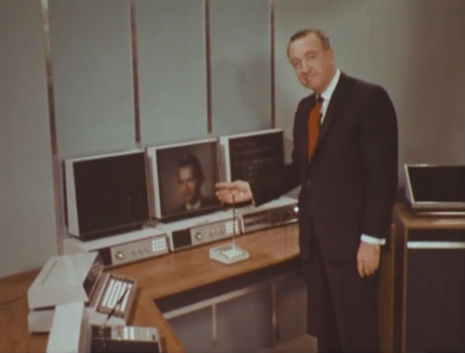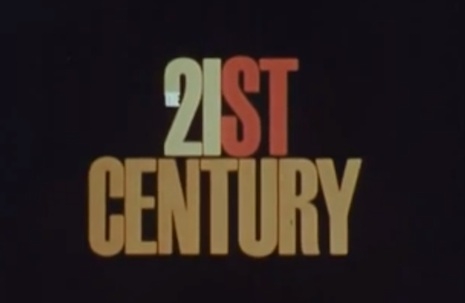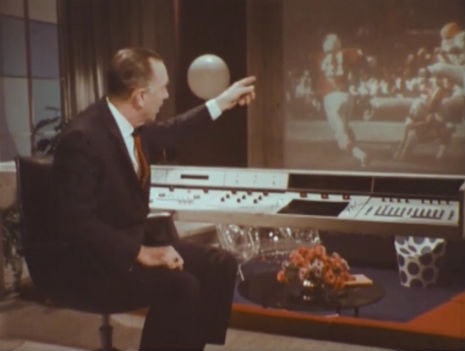
In 1967 CBS produced a half-hour program on the household of the 21st century that, from our vantage point, cannot fail to be fascinating. The passage of time inevitably makes fools of sages; it also confers on the people of the present tense a wholly unearned feeling of cocksure confidence, all because “we” know things that “they” cannot possibly know. So it’s important not to let that arrogance get the better of us.
Having said that, they didn’t do such a great job in predicting what we’d be doing in 2001, much less 2014. But they did nail a couple things almost exactly.

The show is obsessed with the activities of the nuclear family and so very worried about growing trends of urbanization. According to the program, by the year 2001, fully 90% of the world’s people will be living in urban environments. In the United States at least, the year 1967 was approximately the start of a massive wave of suburbanization—a nit-picker might claim that such people are living in urban systems, but either way modular systems of construction such as Israeli–Canadian architect Moshe Safdie’s Habitat 67, which debuted at the Montreal Expo in 1967, are not relevant to the average suburbanite. Meanwhile, Greek urban planner Constantinos Doxiadis suggests the miniaturized micro-environments of Japanese culture as a model for the West. The average suburban tract housing gets somewhat trashed, but to my perception that is still the main model for non-urban American life, whereas in cities, the good old apartment building still reigns supreme.
It’s once we get into the regular suburban home that things get more interesting. All of us have just lived through a remarkable technological revolution that was really impossible to foresee in 1967—its main artifacts are the personal computer, the smartphone, and the Internet generally. Host Walter Cronkite’s future home is stubbornly analog, as it must be, but he and his team still get a few major things right. Most intriguingly, Cronkite takes us through a futuristic den, where the “man” will do much of his office work: “Now this is where a man might spend most of his time in the home of the 21st century. This equipment here will allow him to carry on normal business activities without ever going to an office away from home. ... In the 21st century it may be that no home will be complete without a computerized communications console.” (That’s what the man does; the woman has to be content with a very dreary-looking printout of a recipe. Her liberation would require revolutions that were less technological in nature.)

This is of course, uncannily correct—many people (including myself) have forsaken office life and accomplish most of their work tasks at home. Whether or not most of those people work for companies is another question (I don’t).
Their office has three bulky screens and a paucity of keyboards, as well as a massive telex-style device that functions a bit like a ticker tape, furnishing a display of news articles that can be printed out. What the producers of the show couldn’t see is that most of the devices would get smaller, and that most of the devices would collapse into a single device connected to the world at large. Still, even if it’s a little rough around the edges, they definitely crept up to probably the single most transformative changes of the last 50 years, our ability to accomplish tasks using devices with TV screens.
Another thing they totally nail is the advent of the microwave oven, whose ubiquity would more or less become a reality in the 1980s—largely as they describe it. However, their sense of the kitchen of the future is a little bit too pointlessly automated; for example, they seem to think that we’d be likely (with the press of a button) to have our plateware generated for each meal, after which it would be cleaned and the plastic remolded for the next repast. The idea of pushing a button and summoning brand-new dishes was a little too powerful for them, apparently.

Cronkite and the living room console, with which he has called up a rousing football game on the TV.
Cronkite sensibly spends a little time with a British robotics expert, but while robots are an indisputably important feature of modern life, their presence in the average household starts and ends, more or less, with the Roomba. Those changes may yet happen, but at the same time our resistance to the household being taken over by an army of automatons may be stronger than they realized in 1967.
Their living room features a TV set that is roughly the size of a garage door—hey, science, when are we getting that, huh? The living room’s main feature is a console about the size of an average canoe where we can control the music volume, the lighting, and so forth. Again, it was difficult for them to see that we might not want so much real estate and complexity dedicated to such a simple array of tasks. In the case of that woman and her recipe, the real win for the person charged with cooking meals in 2014 isn’t the ability to print out a recipe, it’s the wealth of crowd-sourced information at our disposal. If I want a gourmet grilled cheese sandwich, within seconds I can access thousands of variations on the recipe, many of them validated in a crucible of upvotes and downvotes with helpful user comments
In the end, they did an OK job, while woefully underestimating the varying uses that different family members might have for the new technology. Beyond that, their preference for larger automated systems over smaller, modular systems seems off the mark. (Maybe they should have let the Habitat 67 guy modularize the in-house technology.) And beyond that, the pervasive role of the corporations who would sell us these great devices is also hardly mentioned. Maybe that was just assumed?